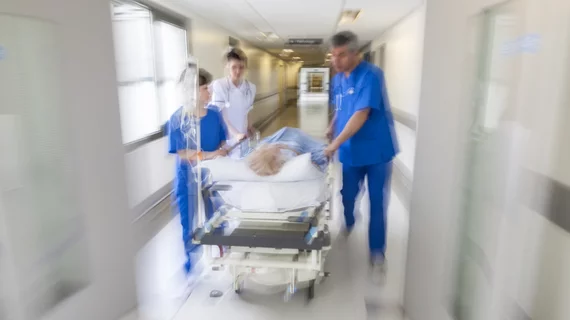Portable MRI system slashes the time it takes to image stroke patients
A portable MRI scanner can help get stroke patients in urgent need of imaging scanned in a fraction of the time it would take to complete the normal standard of care in hospital settings.
Health technology company Hyperfine just released a preview of new performance data on the use of its portable Swoop system. The new data indicate that stroke patients in emergency departments can complete their imaging up to 12 times faster with the ultra-low-field scanner.
These and other findings from the ACTION PMR (Acute Ischemic Stroke Detection with Portable MR) study were presented this week by Keith Muir, MD, of the University of Glasgow, at the 2024 European Society of Neuroradiology (ESNR) Annual Meeting.
In acute stroke care settings, the amount of time that lapses in between a patient’s onset of symptoms, hospital arrival and imaging is critical. National guidelines recommend that patients displaying stroke symptoms are sent for imaging within 25 minutes of their arrival. But this isn’t always feasible in busy departments or those that are strapped for resources.
In recent years, portable MRI scanners that can be used bedside have been presented as a way to expedite stroke imaging in busy settings. The ACTION PMR study, which is ongoing, is analyzing the impact of these scanners.
According to interim data from the study, portable MRI scanners yield a median time-to-scan of 2.5 hours compared to 27.7 hours. The imaging acquired on the Swoop system is of comparable diagnostic quality to head CT exams, and yields similar specificity compared to routine clinical MRI (1.5T). The exam also has been well tolerated by patients.
“This interim analysis demonstrates that the portable [ultra-low-field] MRI system is a promising tool for the acute stroke diagnostic workup in an emergency department setting,” the conclusion states. “The improved time to imaging compared to routine MRI could facilitate quicker decision-making in acute stroke management. Additionally, the high tolerance rate among patients underscores its potential usability in a clinical environment.”
Experts are optimistic that the use of portable systems can increase accessibility to neuroimaging and efficiency in stroke care.
Learn more about the new data here.

